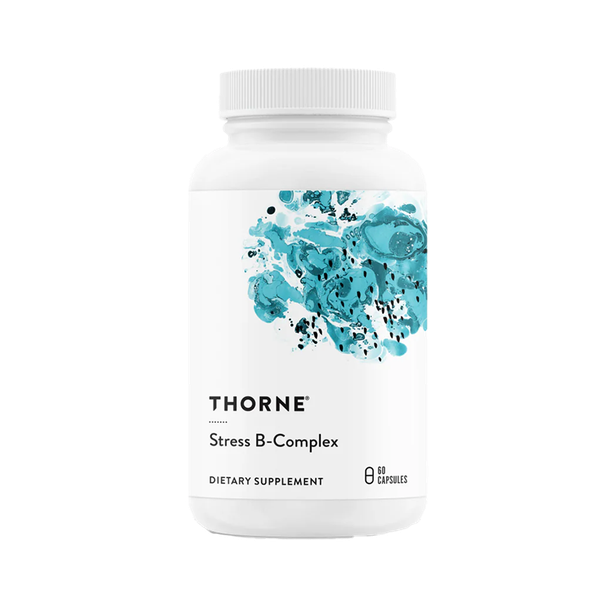
How To Eat For Better Cortisol Control
Support Your Gut
Your gut and brain are intimately connected – what’s going on in your gut can impact your mood, stress resilience and overall sense of calm. When your gut microbiome is out of balance, it affects neurotransmitters like serotonin and dopamine, which are essential for maintaining a positive mindset. Research has proven the importance of gut health in managing stress, so nurturing it should be a top priority. Cutting back on ultra-processed foods and sugary snacks – both of which wreak havoc on gut health and affect neurotransmitter function – is essential. Prioritise fibre-rich superfoods like whole grains, nuts and seeds – mixed flaxseed and Clearspring tamari roast pumpkin seeds are staples in my kitchen – as well as fermented foods rich in good bacteria. I also rate Biona organic sauerkraut, Willy’s apple cider vinegar, Yeo Valley live yoghurt, Momo kombucha, and Clearspring brown rice miso paste. Don’t forget about prebiotics, the ‘fertiliser’ for your good bacteria – oats, onions, garlic, leeks and artichokes are great sources – and eat more bone broth, which is incredibly healing for the gut.
Balance Blood Sugar
We've all experienced the dreaded ‘hangry’ moment – when blood sugar plummets, cortisol spikes and stress levels skyrocket. Opting for slow-release carbs and avoiding refined sugars is your golden ticket to keeping your mood and energy steady. Swapping refined, white carbs for wholegrain alternatives is a no-brainer – my go-to bread is Biona organic rye bread and quinoa or brown rice over white rice. Make sure every meal includes protein (think meat, fish, eggs and legumes) to support neurotransmitter production and mood regulation.
Upgrade Your Breakfast
Start your day with a nutrient-packed breakfast to stabilise blood sugar, boost brain function, and support gut health – the key factors in managing stress and promoting a positive mood. A savoury breakfast is the gold standard. My go-to is scrambled eggs on wholegrain toast with avocado. Eggs are rich in choline, a key nutrient for brain health and neurotransmitter function. Wholegrain toast helps balance blood sugar, while avocado provides healthy fats to support cognitive function and mood stability. Or try a green smoothie – blending spinach, banana, almond milk, chia seeds, and a spoonful of nut butter. Spinach is rich in magnesium (great for relaxation), bananas contain tryptophan which helps serotonin production, and chia seeds provide fibre and healthy fats for sustained energy.
Feed Your Mind
GABA – gamma-aminobutyric acid – is your brain’s natural calming agent. To increase GABA levels and keep stress at bay, reach for fermented foods (kimchi, miso and sauerkraut are the best sources), nuts, seeds and green tea. The right fats are also important, since a large part of the brain is made up of fat, including omega-3 and omega-6 fatty acids, which the body can’t produce on its own. These are primarily found in fatty fish, like salmon, mackerel, sardines, herring and anchovies. Magnesium is also key for mental health, sleep and calming the nervous system, and it’s a nutrient we are often deficient in. Magnesium powerhouses are nuts, seeds, dark green leafy veg and dark chocolate. Ombar’s 100% cacao raw chocolate is a delicious source of magnesium.
Cut Back On Cortisol-Spiking Culprits
What you avoid is just as important as what you consume. If you’re feeling frazzled, consider your caffeine and alcohol intake. Both can send cortisol levels soaring, leaving you feeling anxious and drained. While good-quality coffee has its benefits, too much can increase cortisol. If you can’t go without coffee, ensure your beans are the best you can afford and switch your second cup to matcha, which contains l-theanine, a calming amino acid. Or try a coffee without the crash – I rate Reformed Collagen black coffee and London Nootropics Adaptogenic coffee. Be careful with alcohol, too. Although initially relaxing, it can disrupt sleep and increase anxiety over time.
Calm The Mind
For stress support supplements to be truly effective, they should be combined with proactive stress management, which includes a nutritious diet, limited stimulant use, a consistent sleep routine, and calming practices such as meditation or breathwork. There are so many resources at our fingertips that offer support in these areas, such as the Calm App or Insight Timer. Or you can dive even deeper and learn how to meditate properly at the London Meditation centre. How you exercise matters, too, with high intensity exercise shown to spike cortisol, especially if you’re already stressed. For restorative movement, try The Yoga Class, Pilates by Bryony and the Bondi Rise Pilates app.
Consider A Supplement
Vitamin or mineral deficiencies can contribute to increased symptoms of stress. For example, low levels of vitamin D are associated with depression and fatigue, while B vitamins are important for keeping the nervous system balanced. Magnesium is a mineral that is a common deficiency and as well as being important for hundreds of chemical reactions in the body, it is integral for mood and sleep. Adaptogens are also fantastic. These are plants that have been used in ancient remedies that can help reduce stress and promote relaxation. These are the supplements I rate…
- Magnesium Glycinate Capsules, £34.99 | Bare Biology
A highly absorbable form that supports the nervous system and improves sleep. - Essential D3/K2, £26 | ARTAH
An effective combination of D3 with K2 to restore energy levels and emotional wellbeing. -
Ashwagandha & Rhodiola Complex, £13.99 | Higher Nature
Helps lift mood and reduce anxiety. -
Fermented Ashwagandha, £20.15 | Terranova
A highly absorbable form of this adaptogen that helps to restore a feeling of calm. -
Passionflower Aerial Parts, £10.65 | Nature's Answer
Aids in calming the adrenals and increasing GABA in the brain. -
MegaMag Calmeze Magnesium Glycinate Powder, £38.99 | Nutri Advanced
A high dose of magnesium with calming amino acids to support the nervous system and mitigate the effects of anxiety and stress. -
Stress B-Complex, £17.49 | Thorne
Tailored for a high-stress lifestyle, these nutrients work synergistically to enhance energy, cognitive function and mood. -
Advanced Multi-Strain Digestive System Formulation, £19.99 | Bio-Kult
Studies show probiotics can help reduce cortisol levels and improve mood.
Visit LUCYMILLERNUTRITION.COM
Shop Lucy's cortisol control toolkit here…








DISCLAIMER: Features published by SheerLuxe are not intended to treat, diagnose, cure or prevent any disease. Always seek the advice of your GP or another qualified healthcare provider for any questions you have regarding a medical condition, and before undertaking any diet, exercise or other health-related programme.
DISCLAIMER: We endeavour to always credit the correct original source of every image we use. If you think a credit may be incorrect, please contact us at info@sheerluxe.com.





